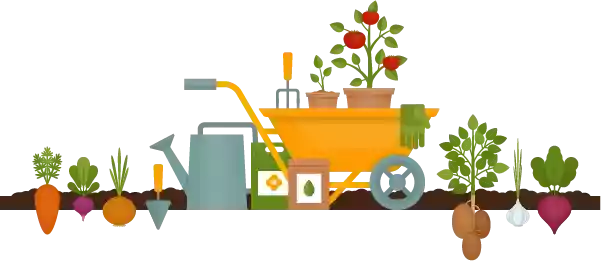Grains are grasses, too! Just like perennial ornamental grasses, grains can be used in your garden or landscape to create seasonal color, texture, and serve as an important resource for local wildlife while naturally improving your soil.
Did you know that all “true” grasses are part of the Poacaeae family, grains included? That is what distinguishes a cereal crop, like wheat, from a legume, like soybean. They are also wind pollinated and self-fertile, ensuring high yields and showy seed heads. Yes, plants in the grass family are low maintenance and high impact and grains are no exception.
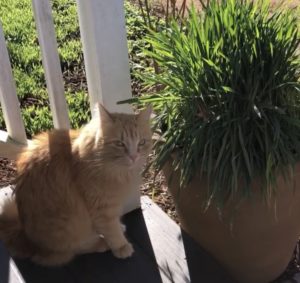
There are many reasons to grow grains in your garden and home. They offer seasonal beauty, are inexpensive and easy to grow, and your pets will love them! Yes, from house pets like cats and rabbits to guinea pigs, grains are favored as a grazing crop by a wide variety of animals. In fact, often oats are sold as “cat grass”. But all the grains in this article will work!
The process is super easy: just fill a container with drainage holes with regular potting soil and scatter the grain seed on top. Lightly cover it with about ½” of soil and water gently. Be sure to place a saucer under the pot to capture any extra water. The seed will germinate in a few days and you can “serve it up” to your pets anytime.
I divide grains for the landscape into two categories: warm season, meaning plants that grow in the frost-free months; and cool season, referring to varieties that appreciate colder air and soil temperatures. Depending on where you garden you will plant these grains at different times of year.
WHAT ARE COOL SEASON GRAINS FOR YOUR GARDEN OR LANDSCAPE?
Let’s start with cool season grains, which include agricultural staples like barley, wheat, and oats. All of these do very well in ordinary garden conditions and thrive in cooler temperatures. Think of them as ornamental grasses that grow all winter! Beyond their ornamental appeal, winter active grains have deep roots that act as natural tillers, breaking up compacted soil while scavenging nutrients from deep within. Yes, grains should be your best friends in the garden, as they perform essential services that make your job easier!
In my book, Gardening with Grains, 3 plants are featured for winter performance in USDA zones 6-9. In cooler climates they can be planted in late winter or early spring. From my experience, all these recommendations are reliable when direct seeded anytime between October- December and will grow through the winter months, looking like fresh green grass. As the days get warm and long, the plants grow rapidly and begin to bloom through April and May. To harvest, wait until the plants turn amber and are completely dried out in June.
BARLEY- The Beauty Queen Horedeum vulgare
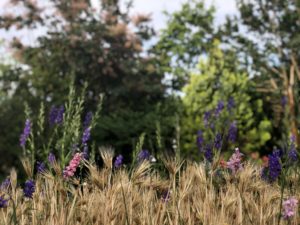
Without hesitation, barley is the most beautiful plant. The large blooms are adorned with long awns (the cat whisker-like structures) that glow in the sunshine. Honestly, barley is a worthy garden specimen just because of its ornamental appeal. But it is also an extremely USEFUL plant- after all barley is a critical ingredient in beer. No, I don’t grow enough barley to supply myself with all the beer I drink, however my appreciation for this beverage has increased significantly as a result of cultivating this grain.
OATS- The Dancer Avena sativa
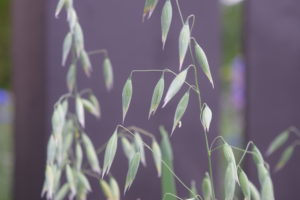
The largest of the cool season grains, oats are elegant and the seed heads dance in the spring breeze. The foliage is wide and has a blue-grey coloration. The mature plants can reach 4’+ tall, making them an ideal addition to the back or middle of a garden border. Oats also have the most robust root system, stretching 48” deep drawing essential nutrients back to the soil surface.
WHEAT- The Workhorse Triticum aestivum
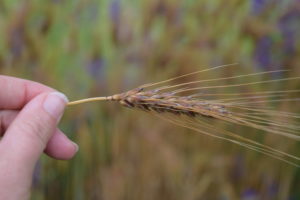
The first grain I ever grew was wheat and it remains the most practical of the cereals cultivated annually in the foodscape. Unlike the other varieties that are grown primarily for ornamentation, the wheat does get harvested, threshed, winnowed, and ground into flour to use in the kitchen. Yes, we do this by hand, with the help of my favorite neighborhood garden helpers. Check out GGWTV.com to watch the process!
WHAT ARE WARM SEASON GRAINS FOR YOUR GARDEN OR LANDSCAPE?
Probably more recognizable are some of the warm season grain crops, such as corn or millet. In fact, I venture to say that every bird enthusiast has grown at least one grain, sorghum, by accident, as that is what frequently germinates below your bird feeder. But did you know you can also grow rice?
Warm season grains prefer the heat, especially soil temperatures above 55F for seed germination and root development. These plants are frost sensitive and will suffer from temperatures below 40F and will die when it drops below 32F.
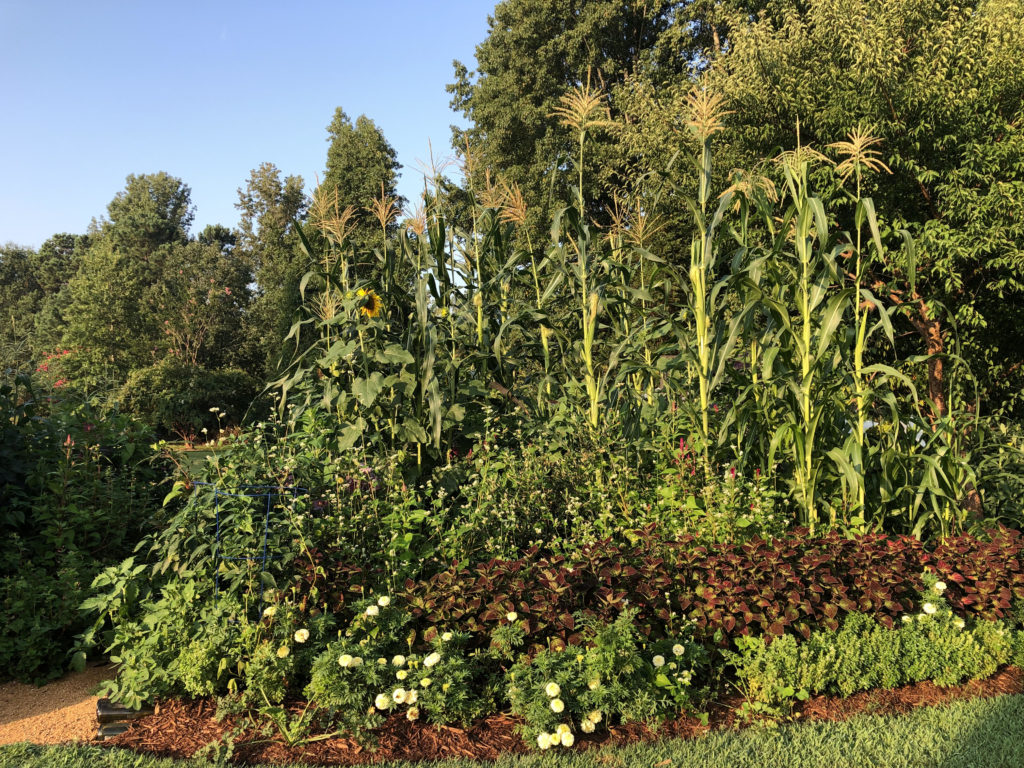
CORN- The Catalyst for Change Zea mays
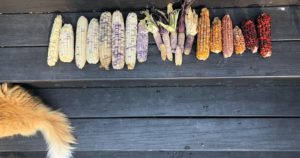
Corn is the grain that most people are familiar with. I have always thought corn was a beautiful plant and have used it in summer plantings for several decades. From fresh eating corn on the cobb varieties to dent selections ideal for grinding into grits, corn is a practical and easy plant to grow in your landscape. Think of it as an exclamation mark that adds interest to a sunny border.
RICE- The Mystifer Oryza sativa
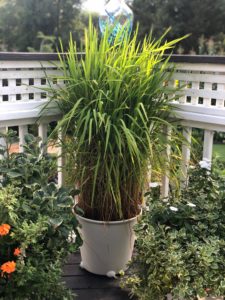
The first question everyone asks is “Doesn’t rice have to be grown in water?” NO! Rise does not require saturated soils. That is a simple way to reduce weed pressure. Rice is an ideal plant for gardeners that live in regions that are hot, humid, and wet! Rice does appreciate supplemental water, so grow it in an area that is irrigated or stays wet, like at the base of a down spout. Or grow it in a container with no holes! This is an awesome way to display it on a patio.
SORGHUM- The Sweetness Sorghum bicolor
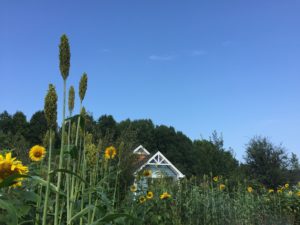
This African native is the most heat and drought tolerant of the grains and because of these qualities will continue to rise in importance in global agriculture for years to come. Think of sorghum as corn on steroids, growing to 14’ (some varieties are smaller) and setting large bundle of seed that will feed local birds till their hearts delights.
HOW TO GARDEN WITH GRAINS & BE CREATIVE
Incorporating grains in your landscape is easy. You can grow them in clumps, just like an ornamental grass. You can also create an “edible meadow” by mixing the grains flowers, such as larkspur and poppies. This creates a dramatic effect, especially when surrounded by another favorite grass- LAWN!
They are also great candidate to be grown in containers as the “thriller” element, similar to how Purple Fountain grass is used. This is by the far the easiest way and what I always recommend for beginning grain growers.
- Fill a pot that has drainage holes with soil- I like using 5-7-gallon sized pots
- Scatter grains seed on top of soil
- Lightly cover seed with soil
- Top dress with mulch of your choice to reduce soil splatter and make it look professional
- Grains will germinate outside in roughly 2 weeks and grow all season
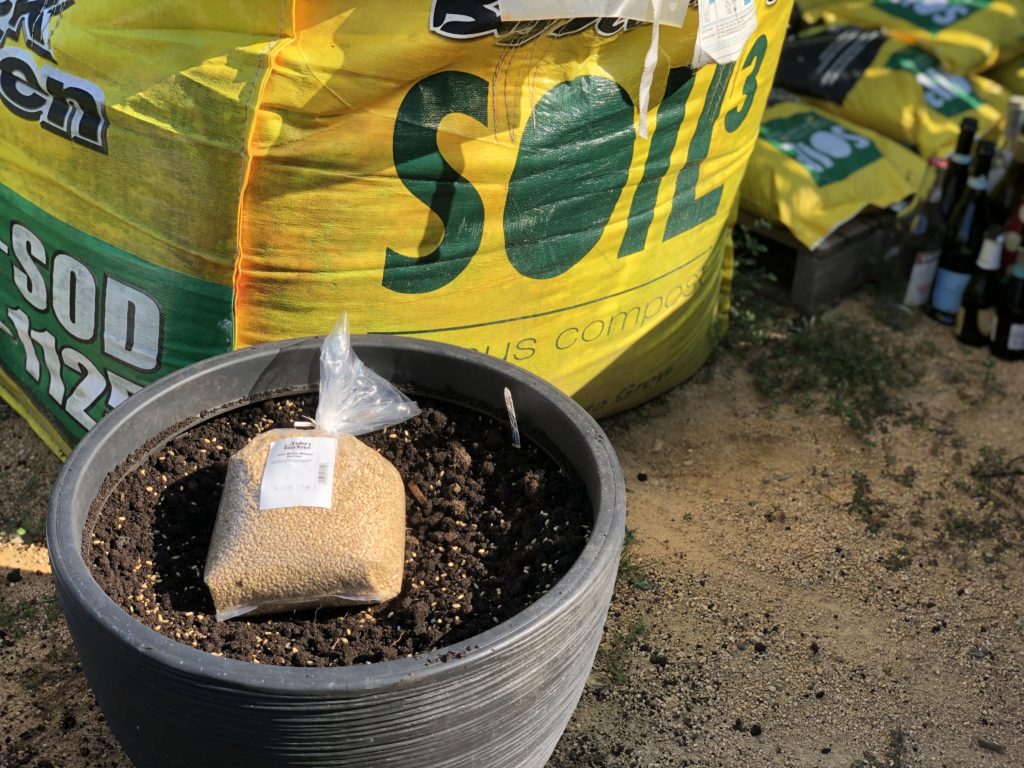
Remember, that just like many ornamental grasses, grains prefer to be grown in full sun, with moist, well-drained soil that has a neutral pH. Though they are adapted to adverse environments, the advantage of growing grains in your home landscape is that you can provide the ideal conditions to maximize their growth. Compared to a petunia or tomato, grains are the easiest plant in the world to cultivate!
WHAT TO DO WITH THESE GRAINS?
The point of Gardening with Grains is to think creatively about what we grow and look to plants that offer practical solutions while creating a dynamic display. Sometimes we eat the harvest, other times we make flower arrangements to share, and most of the time birds and other wildlife reap the harvest. And it’s the same with grasses. It does not really matter what you DO with the grains. It is the journey not the destination!
As always, I hope my “out of the box” approach to gardening will serve as inspiration for you this winter. Give grains a chance- I promise you will not be disappointed by their ease of growing, cold hardiness, and overall beauty. And if you are ambitious, maybe you will make a loaf of bread from your homegrown harvest!
There are a lot of great grain seed resources, here are some of my favorite:
Grain Seed Resources:
About the author:
Bestselling author and horticulturist, Brie Arthur has garnered acclaim for her enthusiastic presentations and practical, out of the box gardening advice. Originally from southeastern Michigan, Brie Arthur studied Landscape Design and Horticulture at Purdue University. With more than a decade of experience as a grower and propagator she now shares her expertise as an advocate for consumer horticulture and home gardening across America. The author of The Foodscape Revolution and Gardening with Grains, Arthur also contributes to the Emmy-winning PBS television program, Growing a Greener World.
To learn more about grains, purchase Gardening with Grains at BrieGrows.com Book Shop — Brie Grows

Recent Posts
- Selective Weed Control: What Kills Weeds But Not Plants in Your Vegetable Garden
- Sustainable Gardening: How to Create a Compost System That Works
- Heirloom Cherry Tomatoes: Cultivation Secrets for the Juiciest Tomatoes
- Fighting Frost: Practical Tips for Using Frost Blankets Effectively
- Finding the Best Local Tomato Plants







